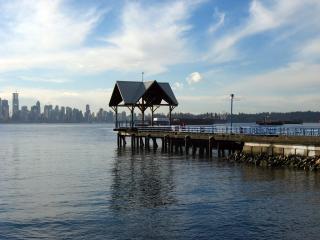The Australian government is working on plans to revise drought payments to farmers. This is in response to the drought that has persisted for the last six years – long enough that people are wondering whether this is actually a ‘drought’ in the sense of a discrete and temporary event, or simply a reflection of the kind of future climate Australia can expect. Already, production of water-intensive cotton is down 66% from 2002 levels. The reduction in Australian agricultural productivity is also contributing to record increases in world food prices.
One question raised by all this is when governments should accept that an industry has become untenable. This has certainly occurred already in many fisheries, including the cod fishery in Canada’s Atlantic waters. Farming could become similarly untenable in many areas due to climate change or the increased need for water elsewhere. Politically, it is extremely difficult to tell people that their livelihood can no longer be sustained through public assistance. That said, such cutoffs are eventually required if public funds are to be spent efficiently on adaptation, rather than simply trying to perpetuate the status quo against worsening conditions.


Some members of the Australian environmental movement, notably the organisation Sustainable Population Australia, believe that as the driest inhabited continent, Australia cannot continue to sustain its current rate of population growth without becoming overpopulated. SPA also argues that climate change will lead to a deterioration of natural ecosystems through increased temperatures, extreme weather events and less rainfall in the southern part of the continent, thus reducing its capacity to sustain a large population even further.[27] In response to this, there are several movements and campaigns around the country which are advocating for environmental action. One such campaign is “The Big Switch”, claimed as Australia’s largest community climate change campaign. [28]
The UK-based Optimum Population Trust supports the view that Australia is overpopulated, and believes that to maintain the current standard of living in Australia, the optimum population is 10 million (rather than the present 20.86 million), or 21 million with a reduced standard of living.
Re: today’s picture:
The end of the pier
Musings on a favourite memento mori
Great Economist article. I have a particular regard for piers spending large amounts of my childhood on and swimming around the pier in White Rock.
The quoted Cummings lines:
For whatever we lose (like a you or a me)
It’s always ourselves we find in the sea
have always struck a chord with me.
Refilling the basin
Australian farmers are furious about a government concession to nature
AFTER a ten-year drought, farmers along the Murrumbidgee River now face ruin from a devastating flood. But it is the government that riles them as much as any caprice of nature. Last month officials called for a cut of nearly 40% in the volume of river water they take for irrigation. At a rowdy meeting in Narrandera, a river town, John Bonetti, a third-generation farmer, drew cheers from about 900 farmers when he told visiting bureaucrats and scientists, “If you think this is the end of the fight, I can assure you it’s only the bloody start.”
Similar scenes at 28 meetings have fired up rural Australia since the water-use plan was unveiled in early October by the authority responsible for managing the basin formed by two of Australia’s longest rivers, the Murray and the Darling. The Murrumbidgee is a big tributary of the Murray. In Griffith, a town near Narrandera, militant farmers burned piled-up copies of the water-use plan, which would affect an area of 2m people that provides about 40% of the output from Australia’s farms. More than four-fifths of the river water taken from the Murray-Darling basin is used for agriculture.
Without irrigation, no crops would grow in the dry plains of south-western New South Wales, where the Murrumbidgee meets the Murray. In 1912 pioneers diverted the Murrumbidgee’s waters into canals to create one of the biggest irrigation projects in Australia, the world’s second-driest continent after Antarctica. Authorities in the four states spanning the basin each allowed farmers to take almost as much water as they wanted.